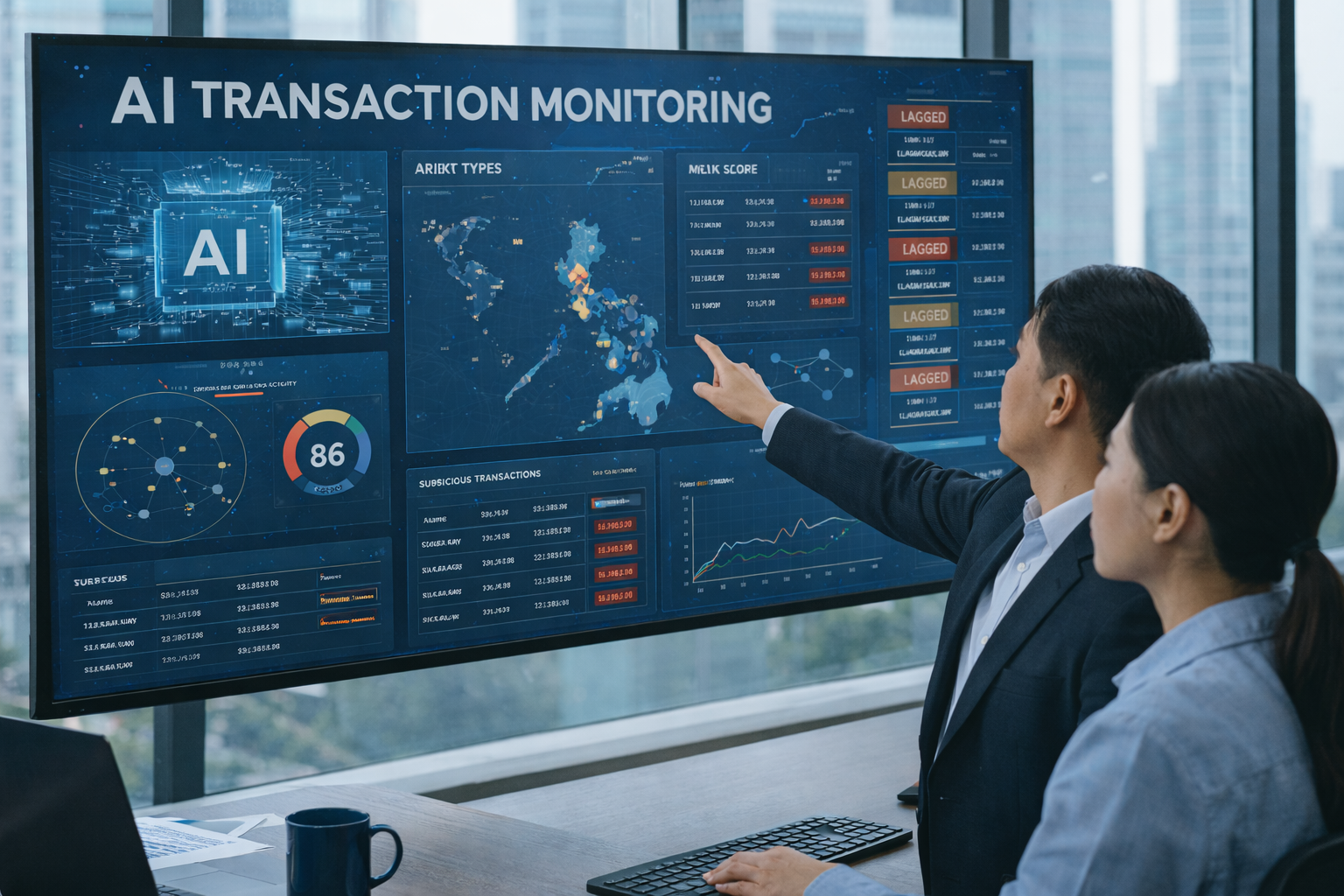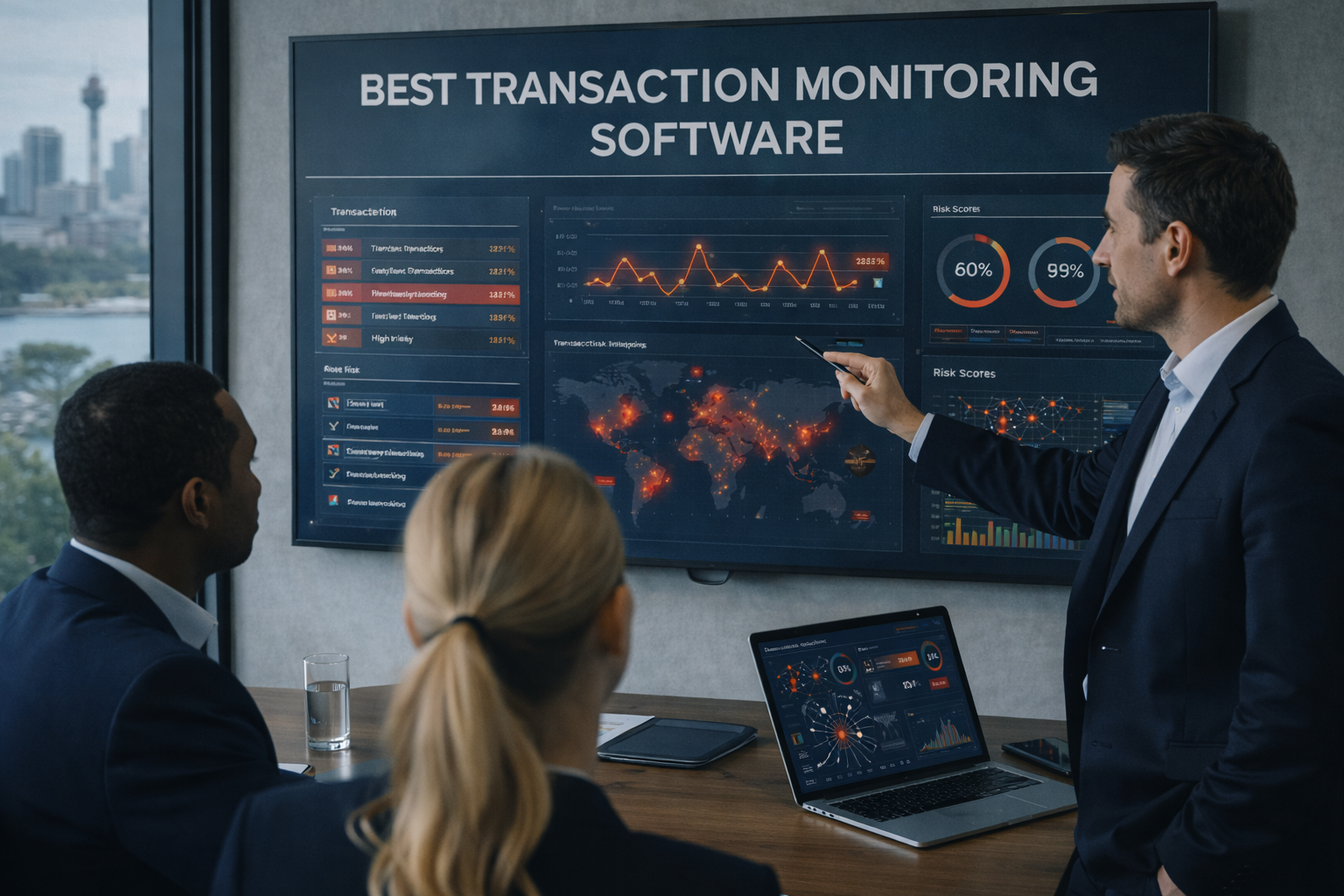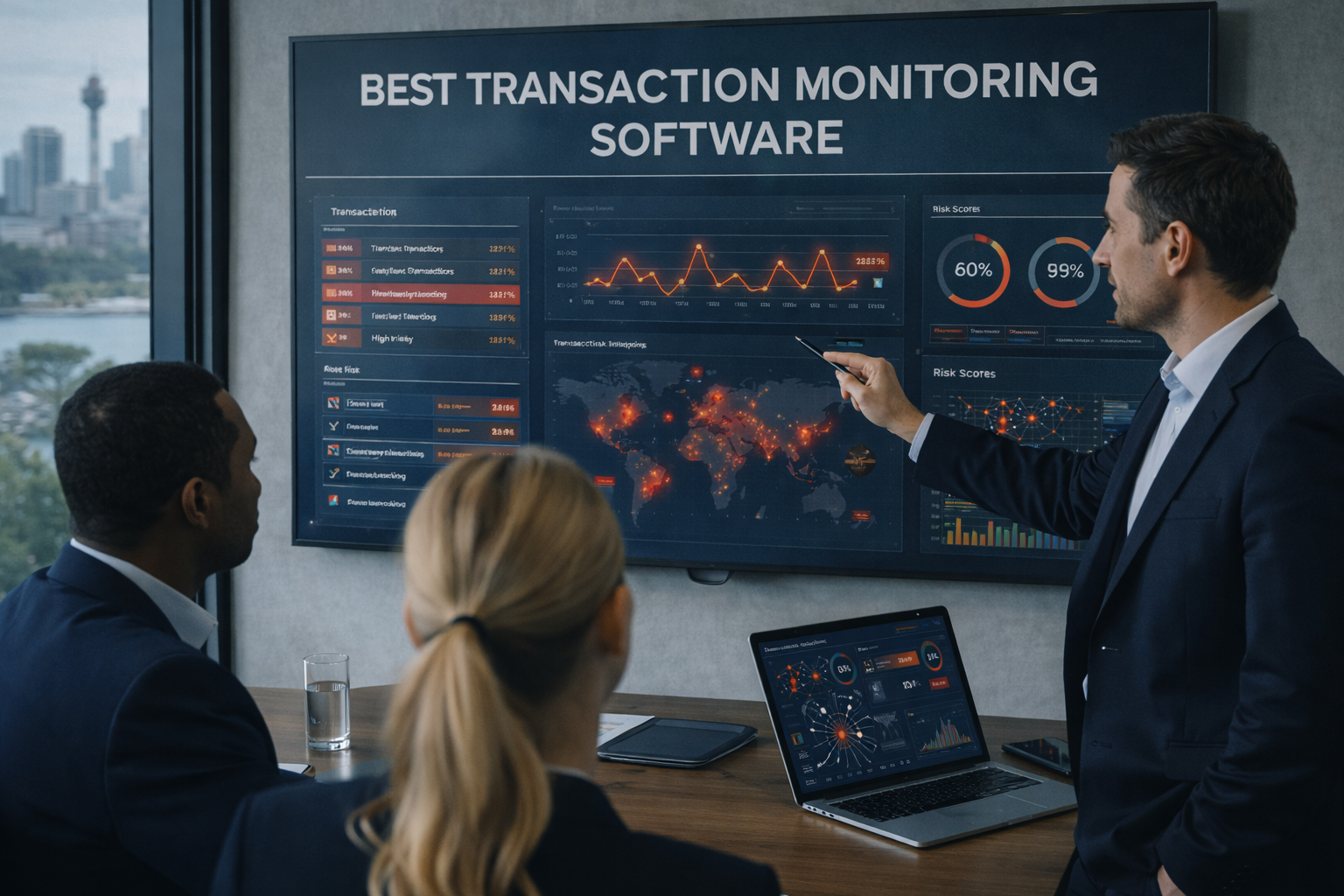Enhancing Security: AML Transaction Monitoring Software
.svg)
Enhancing security in financial institutions is crucial in today's landscape of rising financial crimes. Implementing robust security measures is imperative to safeguard against threats. Introducing AML transaction monitoring software can significantly enhance the protection of financial entities.
Understanding AML Transaction Monitoring
Anti-Money Laundering (AML) is a set of laws and regulations designed to prevent criminals from disguising illegally obtained funds as legitimate income. It is a crucial aspect of the global financial system as it aims to combat money laundering, terrorist financing, and other financial crimes. AML regulations require financial institutions to implement robust monitoring systems to identify and report suspicious activities.
Transaction monitoring is a key component of AML processes as it involves the continuous review of customer transactions to detect and report any potentially suspicious activity. By analysing transaction data, financial institutions can identify patterns and trends that may indicate money laundering or other illicit activities. Transaction monitoring helps organisations comply with AML regulations and protect against financial crimes.
The role of AML transaction monitoring software is essential in detecting suspicious activities within financial institutions. This software automates the monitoring process by analysing large volumes of transaction data in real time, flagging any transactions that may be indicative of money laundering or other illicit activities. AML transaction monitoring software helps financial institutions identify and investigate potential risks, ultimately safeguarding the integrity of the financial system.
How Does Transaction Monitoring Software Work?
Transaction monitoring software uses a combination of rule-based and behaviour-based analytics to identify potential financial crimes. Rule-based analytics involve setting up specific rules and thresholds that trigger an alert when a transaction meets certain criteria. For example, if a transaction exceeds a certain amount or is made to a high-risk country, it will be flagged for further investigation.
Behavior-based analytics, on the other hand, use machine learning and artificial intelligence to analyze patterns and trends in transaction data. This allows the software to identify anomalies and suspicious behaviour that may not be caught by rule-based analytics. For example, if a customer suddenly starts making large transactions that are out of their usual spending patterns, it may be flagged as suspicious.
Features to Look for in Transaction Monitoring Tools
Real-time monitoring capabilities
Real-time monitoring capabilities refer to the ability of a system to provide up-to-the-minute information on key performance indicators. This means that users can access data in real time, allowing them to make informed decisions and take immediate actions based on current information. Real-time monitoring capabilities are essential for organizations that need to react quickly to changing market conditions or operational challenges.
Integration with existing systems
Integration with existing systems involves the seamless connection of a new software solution with the organization's current infrastructure. This integration allows data to flow seamlessly between systems, eliminating the need for manual data entry or duplication of efforts. By integrating new systems with existing ones, organizations can improve efficiency, reduce errors, and leverage the full potential of their technology investments.
Customisable alert mechanisms
Customisable alert mechanisms are tools that allow users to set up notifications based on their specific needs and preferences. These mechanisms can be tailored to monitor specific metrics, thresholds, or events and alert users when certain conditions are met. By customising alert mechanisms, organisations can ensure that they are notified of important developments in real time, allowing them to take timely action and make informed decisions.
Read More How Transaction Monitoring Software Enhances Security
Reporting and analytics functionalities
Reporting and analytics functionalities refer to the capabilities of a system to generate and analyze data for the purpose of monitoring performance, identifying trends, and making informed decisions. These functionalities can include the ability to create customized reports, generate visualizations of data, and perform advanced analysis using statistical tools. By using reporting and analytics functionalities, organizations can gain valuable insights into their operations, customer behaviour, and market trends, enabling them to make data-driven decisions and improve performance.
Benefits of Transaction Monitoring Software
Transaction monitoring software offers several benefits to financial institutions, including:
- Compliance: As mentioned earlier, transaction monitoring software is a crucial part of a financial institution's compliance program. It helps them meet regulatory requirements and avoid hefty fines for non-compliance.
- Risk Mitigation: By detecting and preventing financial crimes, transaction monitoring software helps financial institutions mitigate their risk and protect their reputation.
- Efficiency: With the ability to analyze large volumes of transactions in real time, transaction monitoring software helps financial institutions save time and resources. This allows them to focus on other important tasks and improve overall efficiency.
- Improved Customer Experience: By detecting and preventing fraud, transaction monitoring software helps protect customers' accounts and personal information. This can improve customer trust and satisfaction.
Top Transaction Monitoring Solutions
When it comes to transaction monitoring tools and software, there are several top options that stand out in the market. These leading tools include but are not limited to NICE Actimize, SAS Anti-Money Laundering, FICO's Falcon Platform, and Tookitaki's FinCense Platform. Each of these tools offers unique features and benefits that cater to different needs and requirements in terms of transaction monitoring.
NICE Actimize offers a comprehensive suite of solutions that cover various aspects of compliance and risk management. SAS Anti-Money Laundering is popular for its machine learning algorithms and customizable rule sets that can adapt to changing threats and patterns. FICO's Falcon Platform is renowned for its predictive modeling and artificial intelligence capabilities that can help prevent fraud before it occurs.
While these tools offer a wide range of benefits such as improved detection rates, reduced false positives, and enhanced compliance, they also come with potential drawbacks. Some users may find the complexity of these tools challenging to navigate, requiring significant training and expertise to utilize effectively. Additionally, the cost of implementing and maintaining these tools can be prohibitive for smaller organizations with limited resources.
In terms of effectiveness in enhancing security, these transaction monitoring tools have been proven to be invaluable in detecting and preventing fraudulent activities. By leveraging advanced analytics, machine learning, and predictive modeling, these tools can help financial institutions stay ahead of emerging threats and comply with regulatory requirements. However, it is important for organizations to regularly update and fine-tune their monitoring tools to ensure they remain effective in mitigating risks and protecting sensitive data.
Implementing Transaction Monitoring Software
Best practices for implementing transaction monitoring software, include:
- Assessing Your Needs: The first step is to assess your institution's specific needs and requirements. This will help you determine the type of transaction monitoring software that is best suited for your institution.
- Choosing a Vendor: There are many vendors in the market that offer transaction monitoring software. It's important to do your research and choose a reputable vendor that offers a solution that meets your needs.
- Integration: Once you have chosen a vendor, the next step is to integrate the software with your existing systems. This may involve working with your IT department or the vendor's technical team.
- Customization: Transaction monitoring software can be customized to meet your institution's specific needs. This may involve setting up rules and thresholds, as well as configuring the software to work with your existing systems.
- Training and Testing: It's important to train your staff on how to use the software and conduct thorough testing to ensure it is working correctly before going live.
The Uniqueness of Tookitaki's Transaction Monitoring Software
Tookitaki's transaction monitoring software stands out in the financial crime detection and prevention landscape for its innovative blend of Fraud detection and Anti-Money Laundering (AML) capabilities. What sets the tool apart is its foundation on a federated learning model, which is a revolutionary approach in the fight against financial crimes. This model enables the software to leverage collective intelligence from a wide network of financial institutions, regulatory bodies, and law enforcement agencies, creating a robust and ever-evolving knowledge base of financial crime indicators and patterns.
This collaborative ecosystem not only enhances the accuracy and efficiency of financial crime detection but also allows the Tookitaki solution to adapt dynamically to emerging threats, offering unparalleled risk coverage. By integrating insights from the Anti-Financial Crime (AFC) Ecosystem, it ensures that financial institutions can stay ahead of sophisticated financial criminals, making it a pivotal tool in safeguarding the integrity of the global financial system.
{{cta-guide}}
Furthermore, the software is engineered to provide sharper, more precise alerts, significantly reducing the industry's common challenge of high false positive rates. This advanced alert system is powered by Tookitaki's cutting-edge AI and machine learning technologies, which analyze vast amounts of transaction data in real time to identify genuine risks with greater accuracy. This capability not only streamlines the compliance process but also enhances operational efficiency by allowing financial institutions to focus their investigative resources on true threats.
Additionally, Tookitaki's scalable, modern data engineering stack ensures that it can effortlessly monitor billions of transactions, providing real-time responsiveness that is critical in today's fast-paced financial environment. This combination of collective intelligence, advanced technology, and operational efficiency positions Tookitaki as a unique and powerful solution in the global effort to combat financial crime.
Transaction monitoring software is an essential tool for financial institutions in today's digital age. It helps them detect and prevent financial crimes, comply with regulatory requirements, and mitigate their risk. By understanding how transaction monitoring software works and implementing it effectively, financial institutions can protect themselves and their customers from financial crimes.
Discover how Tookitaki's transaction monitoring solution can revolutionize your financial crime detection and prevention strategy. Contact our experts today for an in-depth discussion and a personalized demo to see the power of collective intelligence in action.
Experience the most intelligent AML and fraud prevention platform
Experience the most intelligent AML and fraud prevention platform
Experience the most intelligent AML and fraud prevention platform
Top AML Scenarios in ASEAN

The Role of AML Software in Compliance

The Role of AML Software in Compliance










